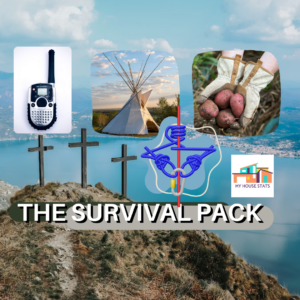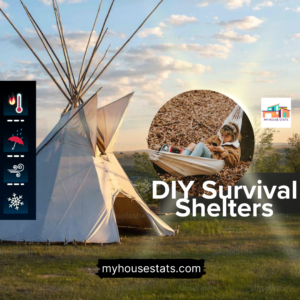Train Derailments (aka Chemical Leaks & Spills)
Why should I care about random train derailments, a term used in place of hazardous chemical leak events. in the United States? Praise God, bless your soul, and let’s learn how this affects you. We’ll also learn how other people around the world handle these situations, changes in daily habits, and changes in your house.
Chemical Leaks Around the United States & Mexico
But first, let’s see where chemical spills and leaks have happened in the United States and Mexico:
- East Palestine, Ohio train derailment on February 3rd, 2023
- Springfield, Ohio train derailment on March 4th, 2023
- Tucson, Arizona chemical spill on February 15th, 2023
- 5-acre Kissimmee, Florida warehouse fire on February 16th, 2023 near Disney World
- Pemex facility fires on February 23, 2023 in Veracruz, Mexico and Deer Park, Texas, USA
- Katy, Texas chemical leak on February 11th, 2023
- Nebraska coal train derailment on February 21st, 2023
- Van Buren Township train derailment on February 16th, 2023 near Detroit, Michigan
East Palestine Train Derailment
This year has had quite a few train derailments and hazardous chemical spills in the United States in 2023. One of the major derailments was the East Palestine train derailment that happened on February 3rd, 2023. Toxic chemicals, including vinyl chloride, were deliberately burned, causing toxins to seep into the surrounding air and water. This includes impacting soil and water quality through groundwater.
When vinyl chloride burns it releases the following toxic gases: hydrogen chloride, carbon monoxide, and phosgene. Even with small concentrations these chemicals can be fatal for human health. It also causes cancer.
East Palestine Dam Collapse
A makeshift dam was created in East Palestine to prevent toxic water contamination. It was reported on March 4th, 2023 that the dam broke because of heavy rainfall and winds. The dam’s location is connected to a stream that flows into the Ohio river, and then into the Mississippi river, the biggest river in the United States. Residents are fearful that the chemical is now in the ground and drinking water aquifers. The dam broke near a restaurant called the The Original Roadhouse, which suffered flooding due to the dam breaking.
Vinyl Chloride
Short-term symptoms include coughing, persistent headaches, itchy mouth, eyes, nose, throat, breathing problems, and asthma attacks. Long term effects cause cardiovascular and respiratory disease, as well as asthma, bronchitis, emphysema, and heart attacks. In addition, wildlife was severely affected, with thousands of fish dead in rivers and streams near East Palestine, Ohio. The same fate was faced by other animals, such as chickens and foxes.
Respiratory Protective Equipment

There are Safety Data Sheets (SDS) or Materials & Safety Data Sheets (MSDS) available for hazardous chemicals. They cover ways to safely handle hazardous chemicals. Respiratory protection equipment protects your airways from breathing in dangerous chemicals.
NIOSH is a branch of the CDC that researches worker safety and health. The CDC (Centers for Disease Control and Prevention) is the national public health agency of the United States. Here is the NIOSH’s recommendations for defending yourself against vinyl chloride:
- At concentrations above the NIOSH REL, or where there is no REL, at any detectable concentration:
(APF = 10,000) Any self-contained breathing apparatus that has a full facepiece and is operated in a pressure-demand or other positive-pressure mode
(APF = 10,000) Any supplied-air respirator that has a full facepiece and is operated in a pressure-demand or other positive-pressure mode combined with an auxiliary self-contained positive-pressure breathing apparatus
- Escape:
(APF = 50) Any air-purifying, full-facepiece respirator (gas mask) with a chin-style, front- or back-mounted canister providing protection against the compound of concern. - or any appropriate escape-type, self-contained breathing apparatus
Cleansing Your Air & Water
Water Filtration
You can choose between getting a cheap water filter or highly effective water filter.
Carbon Filter
The cheapest solution to filtering water is a carbon filter. Carbon filters reduce the levels of common contaminants, like lead or disinfection byproducts. The different types of carbon filters include counter-top pitchers, faucet-mounted, under-the-sink filter, and whole-house filters.
Reverse Osmosis Systems
Paired with a carbon filter, reverse osmosis systems are the most effective for removing water contaminants. You can learn more about reverse osmosis by reading this article.
Air Filtration
Air Purifiers
Get yourself an air purifier. Be sure to count how many units are needed to clean your apartment and that there’s enough space left around and above each one for good air flow.
You can also make your own. All you need is a HEPA (high efficiency particulate absorption) strapped to an electric fan to get an air purifier better than the most expensive air purifiers.
Grow Plants in Your House
Plants help clean the air, and some create oxygen. For more information about plants and gardening, click this article here.
Lifestyle Adjustments

The following steps can be used to minimize how much exposure you get from the hazardous chemicals:
- Limit how much time you spend outdoors, where the hazardous chemical is more concentrated. If you do have to go outside wear a face-covering, such as a bandana or respirator. This limits how much hazardous chemicals enter your body.
- Use food delivery to limit how much you’re going outside.
- Track the pollution in your local area. Municipal agencies share air quality data to various websites, so make use of it to decide when it’s safe to go outside.
- If the air is too bad in your area, take a getaway trip to other towns that aren’t affected by poor air quality.
Summary
What steps have you taken to deal with the train derailments (hazardous chemical spills and leaks)? How many chemical leaks were not listed in this article that you know about? How’s the air quality in your area?
Leave a comment below and be sure to share the article with your friends.


